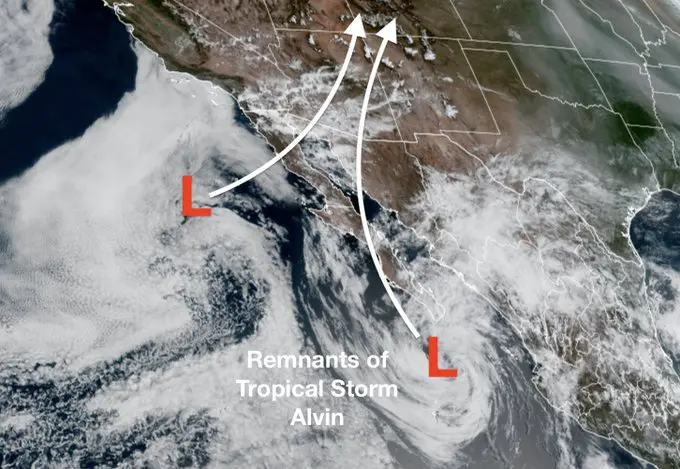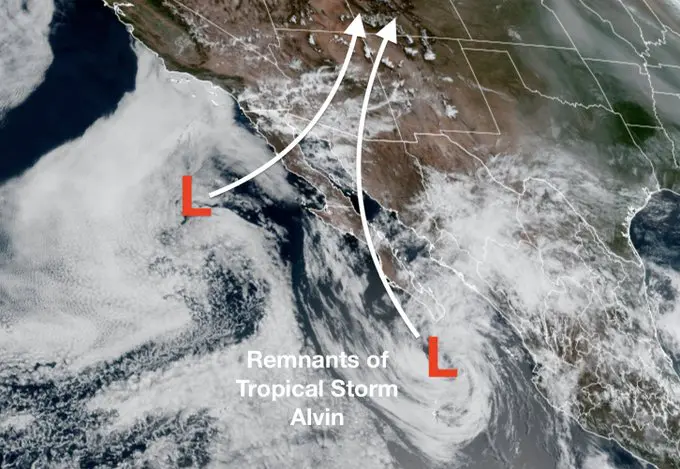
Tropical Storm Alvin, the first named storm of the 2025 Pacific hurricane season, formed on May 29, 2025, off the Pacific coast of Mexico. Although Alvin weakened to a remnant low by May 31, its residual moisture has significantly impacted the Desert Southwest of the United States, bringing unseasonal rainfall and thunderstorms to regions such as Arizona, Southern California, and Nevada.
Formation and Dissipation of Alvin
Alvin originated from a low-pressure system that developed several hundred miles south of Mexico. It strengthened into a tropical storm with sustained winds of 40 mph on May 29. However, as it moved northward, Alvin encountered unfavorable conditions, including increased wind shear and cooler sea surface temperatures, leading to its weakening and eventual dissipation into a remnant low by May 31.
Impact on the Southwest USA
Despite its diminished strength, Alvin’s remnants have had a notable impact on the Southwest United States. The influx of moisture from the storm has led to increased humidity levels and enhanced rainfall across the region, particularly in areas such as Phoenix and Tucson, Arizona, and parts of Southern California.
This unseasonal precipitation is significant because June is typically one of the driest months in the Southwest, preceding the onset of the monsoon season. The unusual rainfall has provided some relief to drought-stricken areas but has also raised concerns about potential flash flooding, especially in regions with steep terrain and urban infrastructure prone to rapid runoff.
Forecast and Future Outlook
The moisture from Alvin’s remnants is expected to continue influencing weather patterns in the Southwest over the next few days. Forecasters predict that the enhanced humidity and rainfall could lead to cooler temperatures, with some areas experiencing up to 15–20 degrees Fahrenheit below average highs.
Additionally, the influx of moisture is anticipated to contribute to the development of thunderstorms in the Plains and Midwest regions early in the coming week, as the system’s remnants interact with existing weather patterns.
Conclusion
While Tropical Storm Alvin did not make landfall as a strong tropical system, its remnants have had a significant and unseasonal impact on the Southwest United States. The storm’s moisture has brought much-needed rainfall to drought-affected areas but has also introduced challenges such as flash flooding and disrupted typical weather patterns. As the season progresses, monitoring the remnants of tropical systems like Alvin will be crucial for anticipating and managing their effects on regional weather and infrastructure.

Illustration picture. Source: https://x.com/granttosterudwx/status/1928870511993373012/photo/1


























